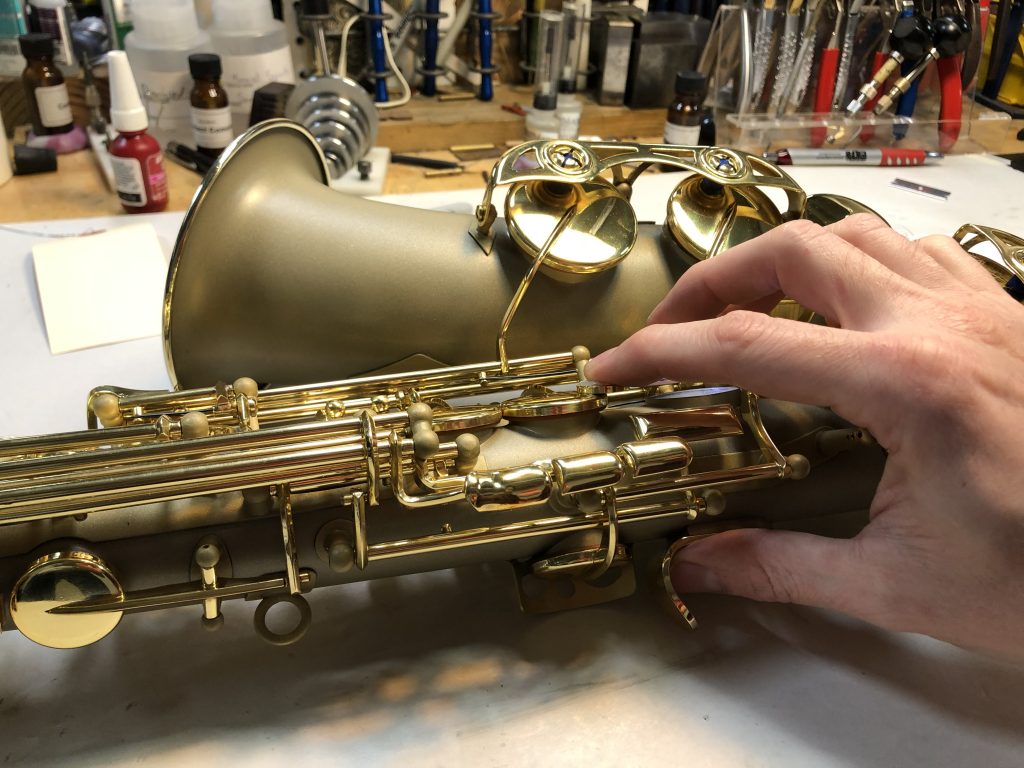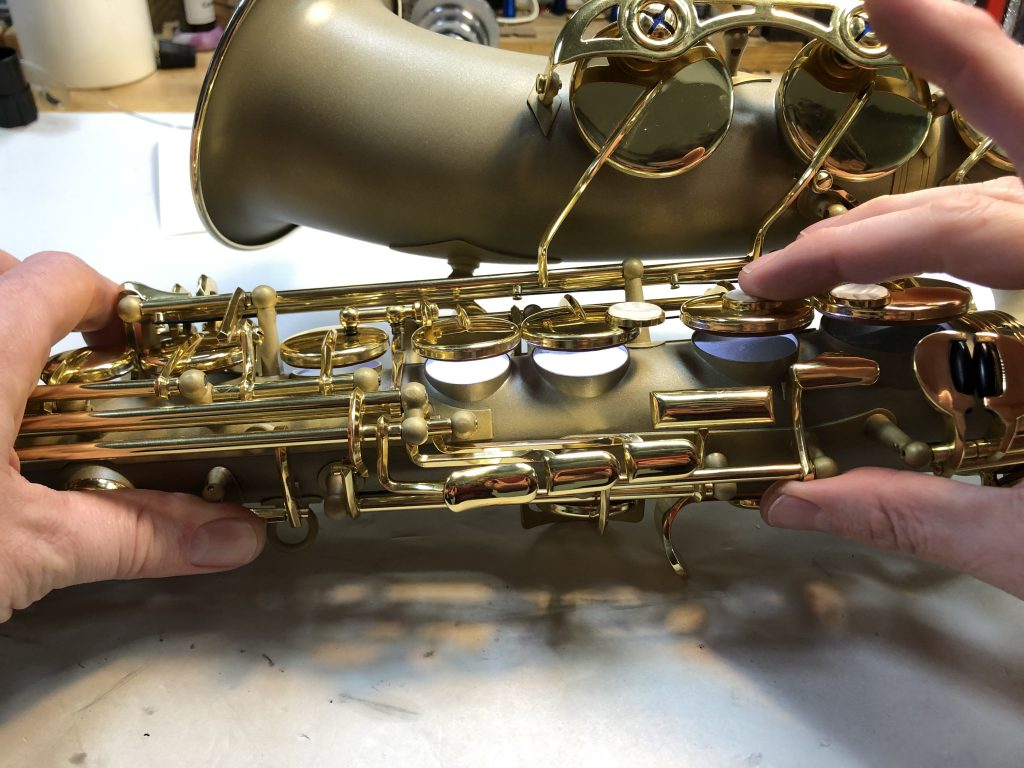
We all know that the low notes of a saxophone don’t respond as easily as the rest of the instrument, it’s probably the first thing we learn on Saxophone. Every saxophonist yearns for honking low notes that can whisper and even faintly pizzicato if needed. However, issues with timing and regulation make this nearly impossible. The secret of the regulation is in the right hand bottom stack keys. Learn to set this up and your low notes will scream with joy. Specifically, timing the G#, F#, F, and to a lessor extent, the E, and D will set the instrument up for big low end tone and great response.
For the purpose of this set-up method, you’ll need to be certain that your pads in this stack are level. Work hard to level the G#, F# and F pads. We know that in the process of timing, the goal is that 2 or more pads hit at exactly the same time. However, even on the finest scale, in a dark room with a leak light, one pad probably hits just a millisecond before the other. The end goal is perfection, but the reality of the situation is a grey scale and I will indicate which way to err if one pad is to hit just slightly before the other. The closer you can get to perfect padding, the less “over adjustment” and player finger pressure you will need to get good response.

F<F# AND F PAD OPEN. 
F<F# AND F PAD CLOSING
Basically, your goal is to set the timing so the G#, F# and F pads close at the exact same time when closed together. To achieve this, begin with G#. You’ll need to hold the Bis Bb key out of the way and depress the G# lever which opens the G# pad. Pressing the F key watch the F,F# and G# pads all close.

F<F# AND G# OPEN 
F<F# AND G# CLOSED
The F# and G# should close together. If they do not make an adjustment so the F# closes the G# pad exactly at the same time. You can change the timing with adjustment screws, bending, or by changing or altering materials.
Next, press the F and check the timing of G#, F#, and F, and set the F to close exactly at the same time as the G# and F#. Because your goal is to close the three keys at the same time using the F key to close them all you are preventing a leak in the G# which will kill your low notes!

PRESSING THE LOW E PAD WITH F# 
PRESSING THE LOW E PAD WITH F#
Now press E and time it to close with the F# pad. The Low E pad, when timed with the F# should close at exactly the same time or favor under adjustment. If you have a vintage instrument with a forked Eb, the E pad should close exactly with the F# and the small Eb pad should favor over adjustment.

I choose to not time the Low D with the F# because it allows for better response and intonation as a “free agent”. If you insist on timing the D to the F#, you will want to set it up like the E-F# adjustment. Favor Under-adjustment.
With the timing set, you should have a nice first play test with a responsive low end. However, as with everything about the saxophone, it’s not about the leak light, but it’s about how it plays and feels. Play through the G# and below, thinking about response. Try playing with force to make sure that the G# key doesn’t blow open under pressure. Play the low D and press the G# key trick to check the G#’s integrity in use. Play softly and delicately to check whether the timing is truly accurate.
If you go back and make adjustments, keep in mind the order of operations, knowing that an adjustment in the G# or F# can affect everything below it.
Happy repairing!


One thought on “#WednesdayWisdom: Making Saxophone Low Notes that whisper and wail! It’s all in the set-up.”
Comments are closed.